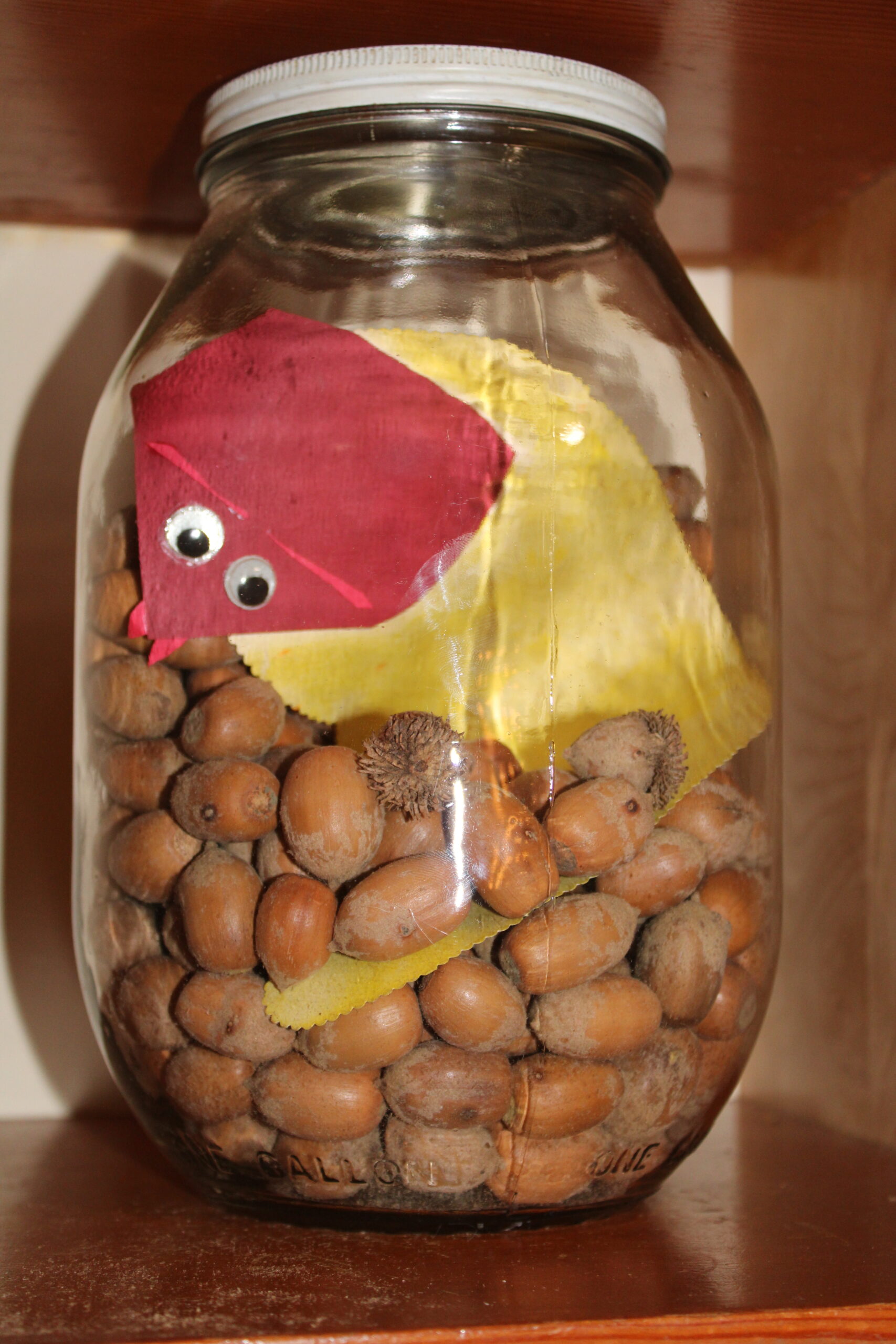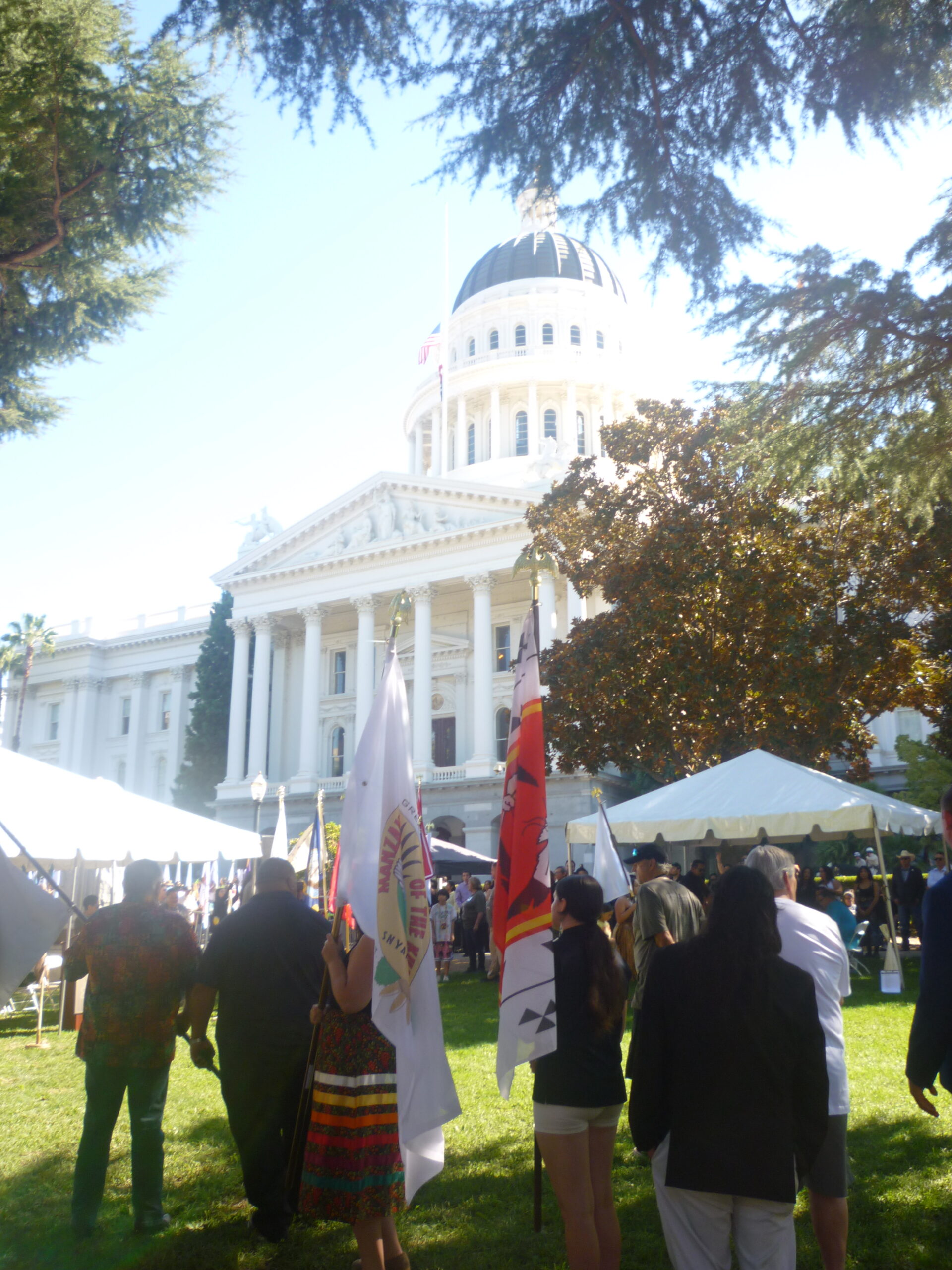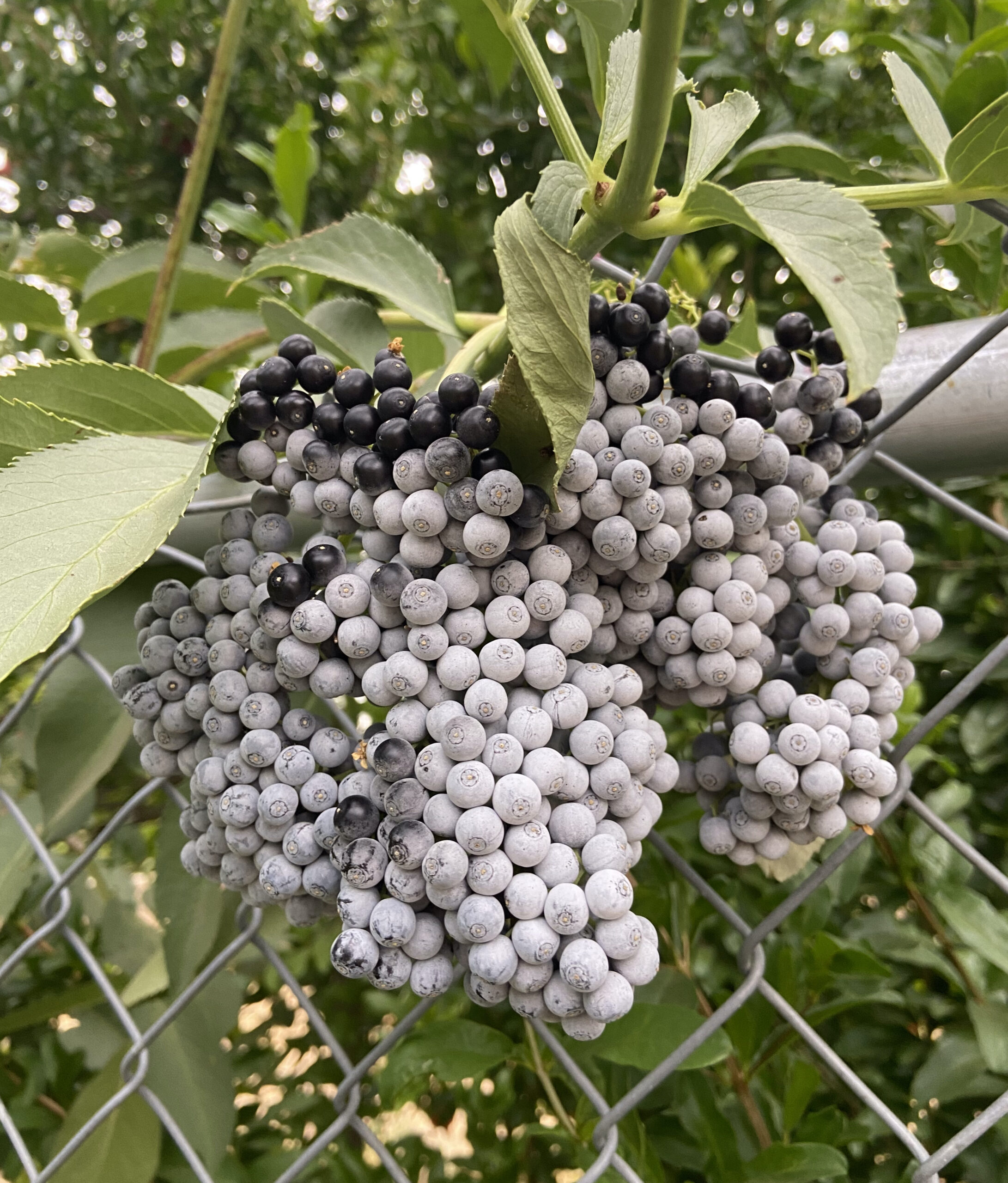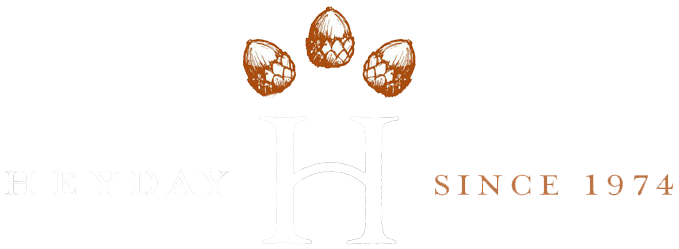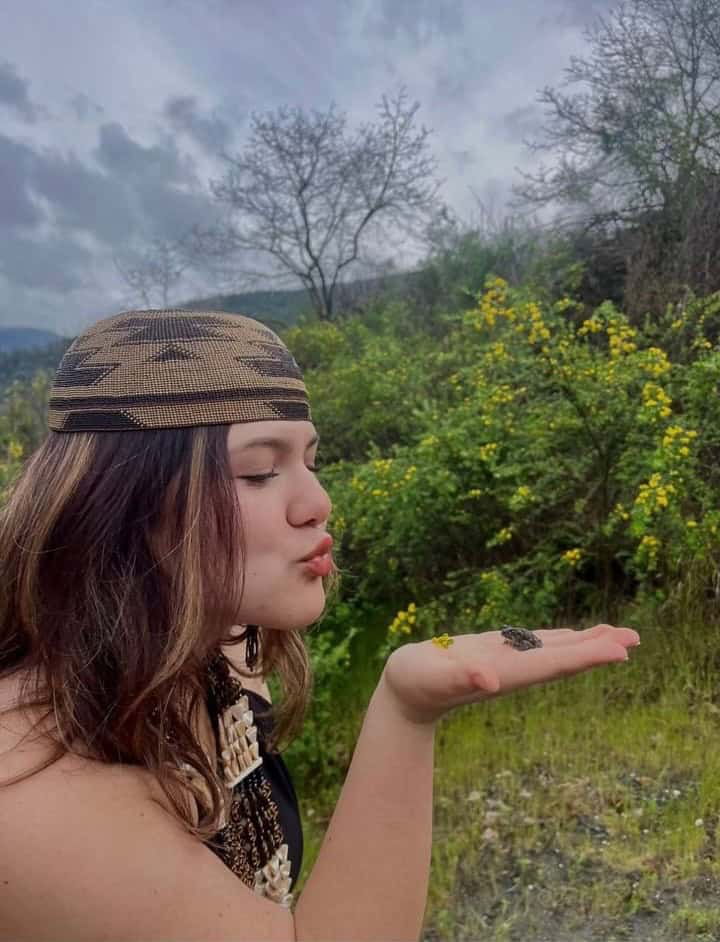
By Muriel Ammon
This June, I observed the young Hupa singer Kinehstan Lewis in action. We were gathered at the Tish Tang Campgrounds, where the Peace and Dignity Runners would rest for the night. They had run all the way from Klamath to Tish Tang that day, a small stretch on their intercontinental run. The group was running from Fairbanks, Alaska to El Cuaca, Columbia, where they would meet up with the southern runners coming from Tierra del Fuego, Argentina. Miss Lewis, along with other local runners, had joined the group for the day. Carrying a prayer staff, she ran down the windy road to Tish Tang. You could sense, in the group, the spiritual bonding between people and place, effected by this sacred run.
With the running complete, the group stood in a large circle, trading songs from all over. As I teetered over whether to sing or not, Kinestan Lewis caught my eye. I watched as she closed her eyes, steeled herself, and then began her song. It was one of those experiences that leaves you momentarily stunned.
Melodious, bold, this girl has pipes. Every single runner was fully attuned to her prayer. And it was a prayer. She captured the energy of the day, the exertion and strength given, and spun it back into her song. She sang to the village, to her home, which she knows so well, and to the k’ixinay, who watch over us. She sang for the visitors and their journey forward. The intensity was transfixing. I watched as she assumed her singing position, and it looked like muscle memory kicking in. Her mind and spirit seemed to have done the exact same thing. She was locked in. She had entered a metaphysical space that was familiar, honed, and deeply rooted in her existence as a Hupa person.

Graciously, Miss Lewis agreed to talk me through her process.
Q: What goes on in your head when you sing in the dances?
A: Ooh, that’s a good question. There’s preparation, mentally. My throat, physically. I’m standing there. I’m counting the rounds of the person who sings before me. I like to hold down my fingers every round, so I don’t get lost.
I take a deep breath. That helps me from being nervous. The biggest step is when you open your voice. In this moment, I remind myself it’s a prayer, not a show. I’m singing to my ancestors, my people, and the baby [in a Brush Dance]. In that beginning moment, when [the song] is ready to come out, I try to project as much energy into it as I can. That’s how my aunties taught me. This process eases my nerves and reminds me why I’m singing.
What really resonates with me is this moment she refers to as “opening your voice.” I absolutely get nervous in the build up to this point, forgetting my numbers and being unsure if it’s the right time for me to sing. But eventually, the moment comes and I’m prepared. Then, in about three seconds, I run through the tempo, the lyrics, and the highest pitch in the song so that I don’t start off too high, too fast, or what have you. I used to practice in my head when other people were singing, to build up the courage myself. But that’s confusing. The songs clash. It’s kind of like being introduced to someone and focusing only on what you’re going to say when it’s your turn. Sure, you’re gonna get your name right, but now you have no idea who you’re talking to. Speak from the heart, sing from the heart. More so, I cherish the time I spend singing with the group, enjoying songs I only hear this time of year.
Once I’ve indulged myself those few seconds, I encounter that ‘opening.’ It’s the moment the sound first comes out, when the lifeforce of the song takes over. As long as the song is in your head, you are in control. But as your breath of air whooshes out past your vibrating vocal cords, the song begins to exist on its own. You work with what comes out. And that can be nerve wracking. It’s part of what makes it so difficult to jump in and sing.
I have a song, “Whe ‘e:n dong Łe:lding nawhway,” passed down from Alice Pratt. It means ‘I am from Łe:lding,’ an emotionally and spiritually complex statement. I think of the times I’ve begun this song. Sometimes I’m shaky, and I adjust. Other times my voice comes out strong and clear, more in accordance with what I had intended. Each iteration is unique. I play with enunciation. Once I had learned each word individually, beyond the phrase, I started to change what I emphasized. And I felt more authority to blend the words back together. Julian Lang talks about ‘song language.’ Words may get shortened, cut off. Vowels may be lengthened to fit the tune. Someone who is fluent in this language will do it naturally. I’m very grateful to know this song from Pratt, my ancestor. It’s a way for me to connect to my own identity as a Tsnungwe person, to my village, to all my ancestors from there. I sing it and they know who I am.
There are certain measures you can take to influence your opening sound. Miss Lewis recommends abstaining from sugary drinks and energy drinks, and substituting warm tea instead. She also highlights the importance of breath. Stand tall, as if a string was pulling you up from the crown of your head, and engage your core. Release all your old breath, then take a supported breath in. And just like anything, practice is the key. Medicine woman Melodie George-Moore encouraged me to make a playlist of songs with characteristics I want to emulate and which exercise my voice. Songs I can really belt in the car, and songs that stretch my range. So far I’ve got Lana Del Rey, angry Taylor Swift, and some Adele. My muses.
I asked Lewis one other question.
Q: What advice would you give to a girl who’s just had her Flower Dance, and is going to start singing in ceremonies?
A: I would remind her that her song is medicine, it is a prayer. At first, you’re going to be nervous, a little shaky. That’s okay, we’re all here beside you. You’re here for a reason, you are completing a job.
Not only are Lewis’s words comforting, but she reminds us that the medicine is the most important part of all of this. Push aside self criticism, not only for yourself, but for the sake of the prayer. A clear mind can better host those good thoughts that will be imbued in song. How beautiful and powerful that last statement is. ‘It’s a job.’ It’s fulfilling a responsibility to your community and engaging in a positive relationship with the baby, with the Flower Dance girl. Strong singers are well respected in our community for their craft and for their capability to fulfill these singing roles. It is heartening to see young singers volunteer their songs in ceremony and in community events like the Peace and Dignity Run. Miss Lewis is certainly a role model in our community, and I look forward to hearing her sing many times more.

Kinehstan Lewis, Hupa, comes from the Medildin village. Her father is a:wok William Lewis and her mother is Kee-yeh Joseph.




